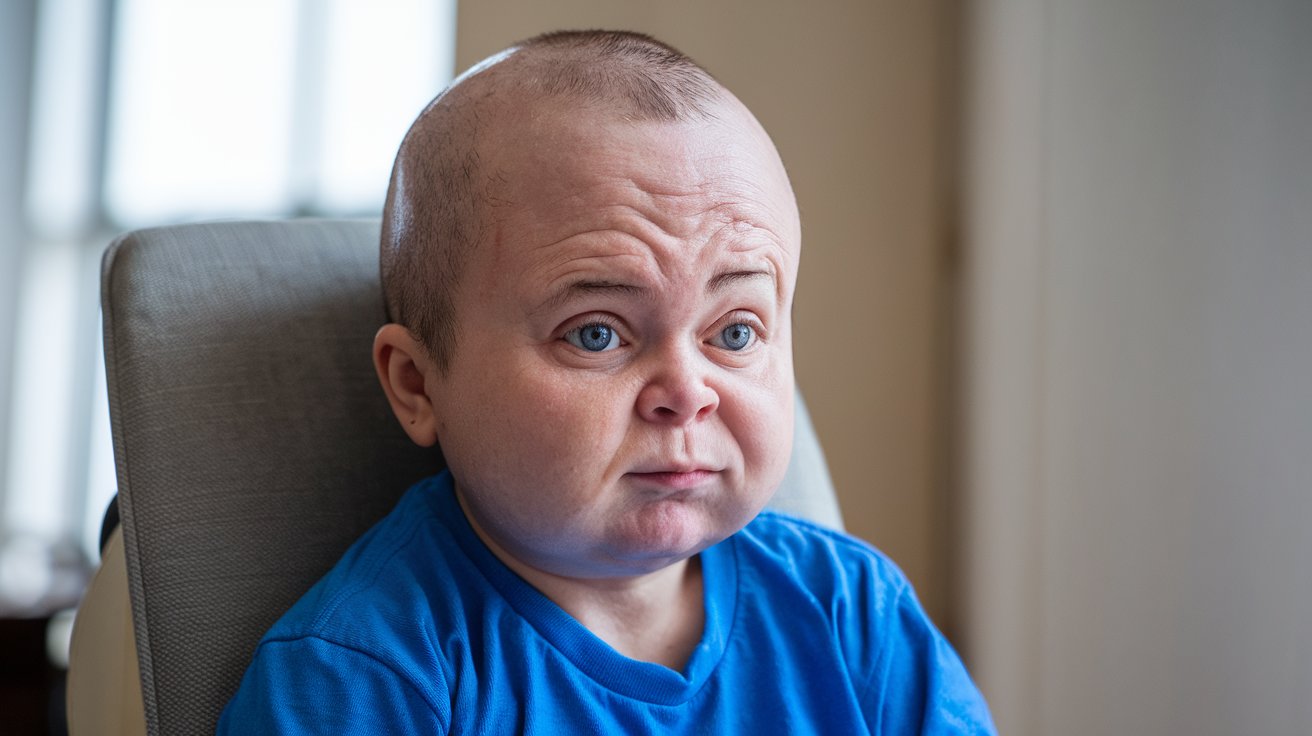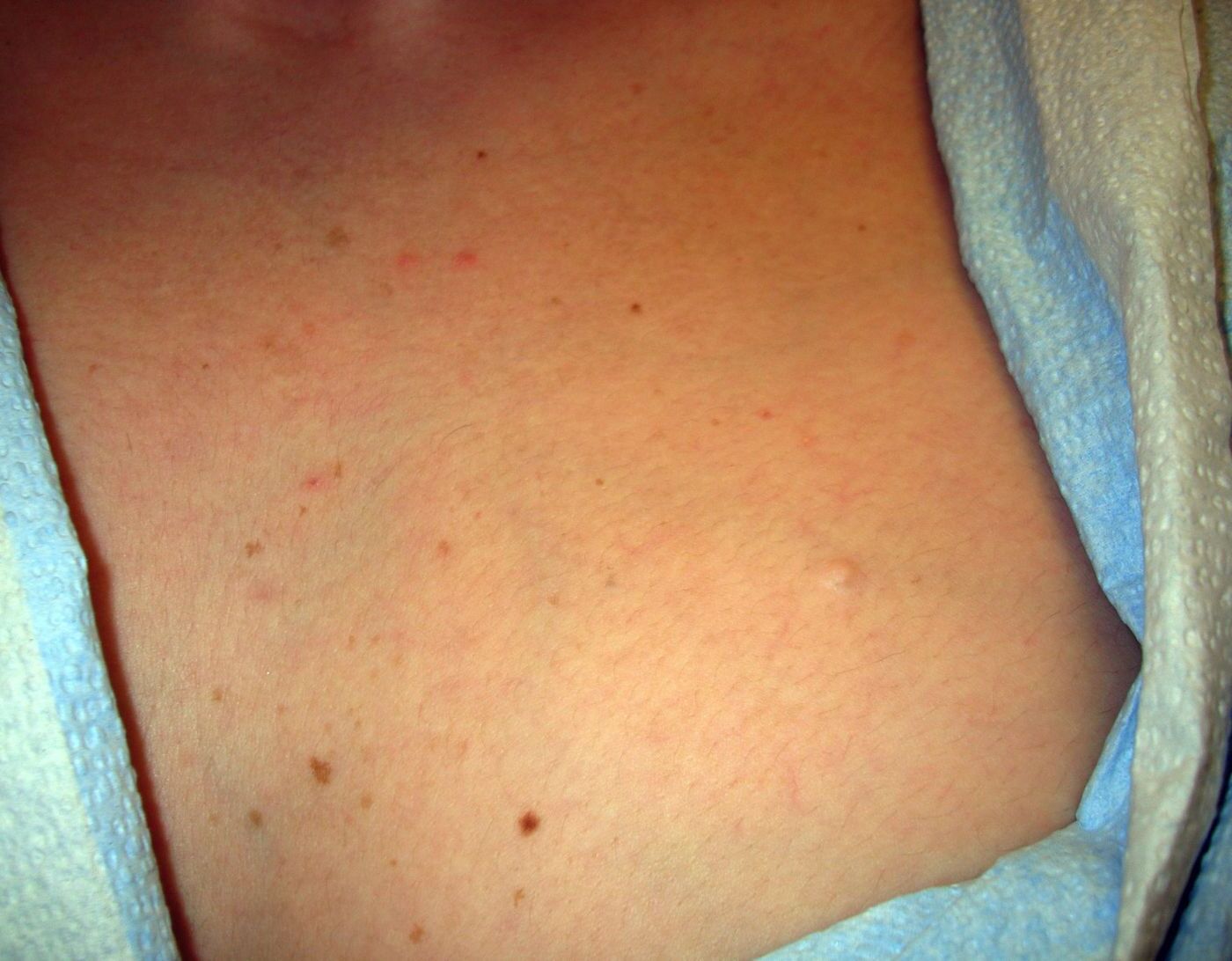
What is Nevo Syndrome? Nevo syndrome, also known as cerebral gigantism or Nevo type, is a rare genetic disorder that causes significant overgrowth starting in the later stages of pregnancy. This condition is inherited in an autosomal recessive manner, meaning both parents must carry the mutated gene to pass it on. Children with Nevo syndrome often experience rapid growth both before and after birth, leading to various physical and developmental challenges. Symptoms include kyphosis, joint laxity, a highly arched palate, undescended testes in males, low-set ears, increased head circumference, and more. Unfortunately, the prognosis is generally poor due to severe cardiac complications.
Key Takeaways:
- Nevo Syndrome, a rare genetic disorder, causes prenatal and postnatal overgrowth, physical abnormalities, and developmental challenges. It is diagnosed through genetic tests and affects individuals of Middle Eastern descent more frequently.
- Nevo Syndrome, also known as cerebral gigantism, is characterized by unique physical traits like kyphosis, joint laxity, and highly arched palate. It shares genetic similarities with Sotos syndrome and requires ongoing research due to its rarity.
What is Nevo Syndrome?
Nevo syndrome, also known as cerebral gigantism or Nevo type, is a rare genetic disorder. It affects growth and development, leading to various physical and developmental abnormalities. Let's explore some key facts about this condition.
-
Definition and Inheritance
Nevo syndrome is an autosomal recessive disorder. Both parents must carry the mutated gene to pass it on to their child. The condition is caused by a deletion in the NSD1 gene, which plays a role in chromatin regulation. -
Prenatal Overgrowth
One of the most noticeable symptoms is prenatal overgrowth. This excessive growth continues into infancy and toddlerhood, often due to low levels of growth hormone and insulin growth factor.
Physical Symptoms of Nevo Syndrome
Children with Nevo syndrome exhibit a range of physical symptoms that can affect their daily lives. Here are some of the most common ones:
-
Kyphosis
Kyphosis is an abnormal forward rounding of the spine. It can cause discomfort and affect posture. -
Joint Laxity
Loose joints, or joint laxity, are common in children with Nevo syndrome. This can lead to frequent dislocations and joint pain. -
Postpartum Overgrowth
The rapid growth seen before birth continues after birth, leading to unusually large infants and toddlers. -
Highly Arched Palate
A highly arched palate means the roof of the mouth is more arched than usual, which can affect speech and feeding. -
Undescended Testes
In males, the testes may not descend into the scrotum, a condition known as cryptorchidism. -
Low-Set Ears
Ears positioned lower than normal are another characteristic feature. -
Increased Head Circumference
Children often have a larger-than-normal head size, which can be a sign of rapid brain growth. -
Outward Wrist-Drop
This condition causes the wrist to drop outward, affecting hand function. -
Edema in Hands and Feet
Swelling in the hands and feet, known as edema, is also common. -
Long Tapered Fingers
Fingers that are longer and more tapered than usual are another physical trait.
Developmental and Health Issues
Nevo syndrome doesn't just affect physical appearance. It also brings several developmental and health challenges.
-
Muscle Tone
Children often have low muscle tone, leading to hypotonia. This affects muscle strength and coordination. -
Eye Anomalies
Various eye problems, including myopia (nearsightedness), are common. Some children may have myopia of up to 6 diopters bilaterally. -
Cardiac Issues
The developing heart often struggles to keep up with the rapidly growing body, leading to a high risk of cardiac arrest and early childhood fatality.
Diagnosing Nevo Syndrome
Diagnosing Nevo syndrome involves recognizing its unique set of symptoms and conducting genetic tests.
-
Diagnosis
Diagnosis typically occurs after birth when the characteristic physical traits become apparent. Since both parents are usually of average height and weight, the condition is often not suspected until the child's unusual growth patterns become evident. -
Genetic Similarities
Nevo syndrome shares genetic similarities with other overgrowth syndromes, such as Sotos syndrome. Both conditions are caused by deletions in the NSD1 gene, although Sotos syndrome is autosomal dominant and associated with learning disabilities and a distinctive facial appearance.
Who is Affected?
Nevo syndrome is rare, but some populations are more affected than others.
-
Middle Eastern Descent
Studies show that Nevo syndrome is more common in individuals of Middle Eastern descent, suggesting a possible genetic predisposition within this population. -
Historical Context
First described in 1974, only a handful of cases have been reported since. The rarity of this condition makes it an area of ongoing research.
Clinical Manifestations
The clinical manifestations of Nevo syndrome can vary widely among affected individuals. Here are some common signs:
-
Prenatal Overgrowth
Excessive weight gain during pregnancy is a hallmark of Nevo syndrome. -
Postnatal Overgrowth
Continued growth after birth is another key feature. -
Kyphosis
Abnormal forward rounding of the spine is common. -
Joint Laxity
Loose joints are frequently observed. -
Highly Arched Palate
A highly arched roof of the mouth can affect speech and feeding. -
Undescended Testes
In males, the testes may not descend into the scrotum.
Final Thoughts on Nevo Syndrome
Nevo syndrome is a rare genetic disorder marked by significant overgrowth starting in the womb. This condition, caused by a deletion in the NSD1 gene, leads to various physical and developmental challenges. Symptoms include kyphosis, joint laxity, a highly arched palate, and cardiac issues. Diagnosis often occurs after birth when unusual growth patterns become evident. While there’s no specific treatment, management focuses on addressing physical and developmental issues. Cardiac monitoring is crucial due to the high risk of complications. Research continues to explore the genetic mechanisms behind Nevo syndrome, aiming to improve understanding and potential treatments. Despite its rarity, ongoing studies offer hope for better management and outcomes for those affected. Understanding Nevo syndrome is essential for providing the best care and support to individuals and families dealing with this challenging condition.
Frequently Asked Questions
Was this page helpful?
Our commitment to delivering trustworthy and engaging content is at the heart of what we do. Each fact on our site is contributed by real users like you, bringing a wealth of diverse insights and information. To ensure the highest standards of accuracy and reliability, our dedicated editors meticulously review each submission. This process guarantees that the facts we share are not only fascinating but also credible. Trust in our commitment to quality and authenticity as you explore and learn with us.


